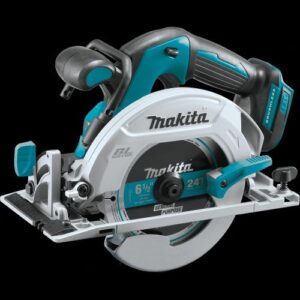Key Takeaways:
-
Estwing rubber mallets are essential tools for woodworking, offering a gentle touch that prevents damage to materials.
-
Choosing the right mallet involves considering weight, handle material, and head design for optimal control and comfort.
-
Proper mallet technique can enhance woodworking projects and extend the life of the tool.
-
Using a rubber mallet can help protect rental spaces and security deposits during woodworking projects.
-
Estwing’s reputation for durability and quality makes their rubber mallets a top choice for woodworkers.
The Gentle Touch of Rubber on Wood
Imagine you’re assembling a delicate wooden frame or fitting a dowel into a tight space. A metal hammer might be too harsh, risking damage to the wood’s surface or even causing cracks. A rubber mallet, on the other hand, distributes the force evenly and minimizes the risk of leaving marks or dents. This makes it the perfect companion for tasks like:
-
Tapping wooden joints together without splintering.
-
Adjusting panels and boards during assembly.
-
Applying force to chisels when carving or shaping wood.
Therefore, for woodworkers who rent their workspace or those who simply want to ensure the longevity of their projects, a rubber mallet is not just helpful—it’s essential.
Using Your Rubber Mallet Effectively
Getting the most out of your Estwing rubber mallet isn’t just about having it in your toolbox—it’s about knowing how to wield it with precision. The key to effective mallet use is understanding the balance between force and finesse. Whether you’re coaxing joints into alignment or nudging chisels through hardwood, the right technique can make all the difference.
Techniques for a Perfect Strike
First things first, grip your mallet near the end of the handle. This gives you better control and maximizes the force of your swing. When you’re ready to strike, let the mallet do the work—there’s no need to muscle it. A well-aimed, steady swing will deliver the right amount of force without overdoing it.
For precision tasks, such as chisel work, use short, controlled taps. This will give you the accuracy needed for fine woodworking without risking damage to your tools or materials. On the other hand, when assembling joints, a few firm, decisive strikes will usually do the trick. Remember, it’s all about the rhythm and not the brute force.
Another pro tip: pay attention to the bounce. After the mallet strikes, it will bounce back slightly. Allow this rebound to help lift the mallet for the next hit, rather than fighting against it. This technique conserves your energy and helps to prevent fatigue, which is crucial during long woodworking sessions.
Most importantly, always strike perpendicular to the surface. This ensures the force is distributed evenly, reducing the chance of damaging your workpiece. And if you’re working with particularly soft woods, consider using a scrap piece of hardwood or a specialized mallet pad as a buffer.
-
Grip the mallet handle near the end for control and power.
-
Use a steady swing and let the mallet’s weight do the work.
-
Apply short taps for precision tasks like chisel work.
-
Strike with firm, decisive blows when assembling joints.
-
Allow the mallet to bounce back naturally to prepare for the next hit.
-
Strike perpendicular to surfaces to distribute force evenly.
-
Use a hardwood scrap or mallet pad as a buffer on soft woods.
Caring for Your Mallet: Maintenance Tips
Your Estwing rubber mallet is built to last, but a little TLC will extend its life even further. Start by keeping it clean; wipe down the rubber head after each use to remove any wood dust or debris. This prevents buildup that could harden over time and affect the mallet’s performance.
-
Wipe the rubber head after use to remove debris.
-
Inspect the handle regularly for any signs of wear or damage.
-
Store the mallet in a dry place to prevent the wood handle from warping.
Regularly check the handle for splinters or cracks, especially if it’s made of wood. A compromised handle can lead to a lack of control and potentially dangerous situations. If you notice any issues, it’s time for a repair or replacement.
Finally, store your mallet in a cool, dry place. Extreme temperatures and moisture can warp the wood handle and degrade the rubber head. By giving your mallet a proper home, you ensure it’s ready to perform whenever you need it.
Protecting Your Projects and Investments
One of the less talked about benefits of using a rubber mallet in woodworking is the protection it offers to your projects and investments. This is particularly true for those who rent their workspace or use shared facilities. A wayward strike with a metal hammer could mean a costly repair or a chunk out of your security deposit.
By using a rubber mallet, you significantly reduce the risk of accidental damage to floors, walls, and other surfaces. The softer impact of rubber is much less likely to leave a mark compared to the unforgiving steel of a traditional hammer. It’s a small investment that can save you big in the long run.
Avoiding Damage to Rental Spaces
For example, let’s say you’re working on a large piece of furniture that needs to be tapped into place. If you’re working on a delicate hardwood floor, a metal hammer could easily dent the surface, leaving a lasting reminder of your project. With a rubber mallet, the risk of such damage is greatly reduced.
Another scenario might involve adjusting fixtures or fittings in a rented property. Here, precision is key, and the forgiving nature of a rubber mallet can be the difference between a successful adjustment and a costly mistake. This is especially relevant for those who work in historical buildings where the preservation of original features is paramount.
Therefore, it’s clear that a rubber mallet isn’t just a tool for the job at hand—it’s also an insurance policy for your workspace. Keep one handy, and you’ll find that it’s not only your projects that benefit, but your peace of mind too.
Ensuring Deposit Safety with Proper Tools
Finally, let’s not forget about the all-important security deposit. Whether you’re renting a home or a workshop, your deposit hinges on the condition in which you leave the space. By investing in the right tools, like an Estwing rubber mallet, you’re taking a proactive step towards safeguarding that deposit.
With its non-marring, bounce-resistant head, an Estwing rubber mallet is designed to deliver the force you need without the collateral damage. It’s an essential tool for any woodworker who values their craft and their commitments. So, the next time you’re setting up shop, make sure an Estwing rubber mallet is within arm’s reach—it’s the smart move for you and your wallet.
FAQ
Can Rubber Mallets Completely Replace Traditional Hammers?
While rubber mallets are incredibly useful, they are not designed to replace traditional hammers entirely. Each tool has its specific purpose. Metal hammers are ideal for driving nails and breaking apart materials, while rubber mallets are designed for jobs that require a softer touch, such as fitting pieces together without damaging them. The key is to use each tool in its proper context to achieve the best results.
What Projects are Best Suited for a Rubber Mallet?
Here are some of the projects where a rubber mallet can shine:
-
Assembling Furniture: When putting together pieces of furniture, a rubber mallet can help fit joints snugly without damaging the wood.
-
Installing Hardwood Floors: A rubber mallet can be used to tap planks into place gently, ensuring a tight fit without marring the surface.
-
Upholstery Work: When stretching fabric over a frame, a rubber mallet can be used to secure the material without tearing it.
-
Setting Tiles: For laying tile, a rubber mallet can help seat them evenly without cracking the ceramic or stone.
These are just a few examples of the many applications where a rubber mallet proves to be the right tool for the job.
“When I was installing a custom bookshelf in a client’s home, the rubber mallet was indispensable. It allowed me to adjust the shelves and secure the backing without a single scratch on the finish—a testament to the mallet’s value in precise woodworking.” – A seasoned woodworker’s testimony.
Why is Estwing a Preferred Brand Among Woodworkers?
Estwing’s reputation in the woodworking community is built on a foundation of quality and reliability. Their tools are known for their solid construction and thoughtful design, which translates into better performance and longevity. An Estwing rubber mallet is a clear example of this, with features like a durable rubber head and a comfortable handle that stands up to the rigors of woodworking.
How Do I Determine the Best Mallet Size for My Needs?
Choosing the right size mallet is crucial for effective woodworking. Here are a few factors to consider:
-
Project Scale: Larger projects may require a heavier mallet to deliver sufficient force, while smaller, more delicate tasks might benefit from a lighter mallet for greater control.
-
Material Hardness: Softer woods may need a lighter mallet to prevent damage, whereas harder woods can withstand heavier blows.
-
User Comfort: The mallet should feel comfortable in your hand and not cause strain during use. It’s important to choose a size that matches your strength and endurance.
Ultimately, the best mallet is one that feels like an extension of your own hand—effective, comfortable, and precise.
Are There Specific Maintenance Routines for Rubber Mallets?
To keep your rubber mallet in top condition, follow these maintenance tips:
-
After each use, clean the head to remove any wood residue or adhesives that could cause damage over time.
-
Inspect the handle and head before and after use for any signs of wear or damage. Address any issues promptly to prevent accidents.
-
Store your mallet in a controlled environment to prevent the rubber from becoming brittle and the handle from warping.
Regular maintenance not only extends the life of your mallet but also ensures it’s safe and ready to use when you need it.
In conclusion, rubber mallets are a vital part of any woodworker’s toolkit, particularly for those looking to protect their work and rental deposits. Estwing’s rubber mallets, with their durable construction and ergonomic design, are the ideal choice for those who take their craft seriously. Remember to select the right mallet for your project, use it with the correct technique, and maintain it well. With these practices, you’ll be able to tackle any woodworking project with confidence and precision, ensuring that both your creations and your workshop remain in pristine condition.



